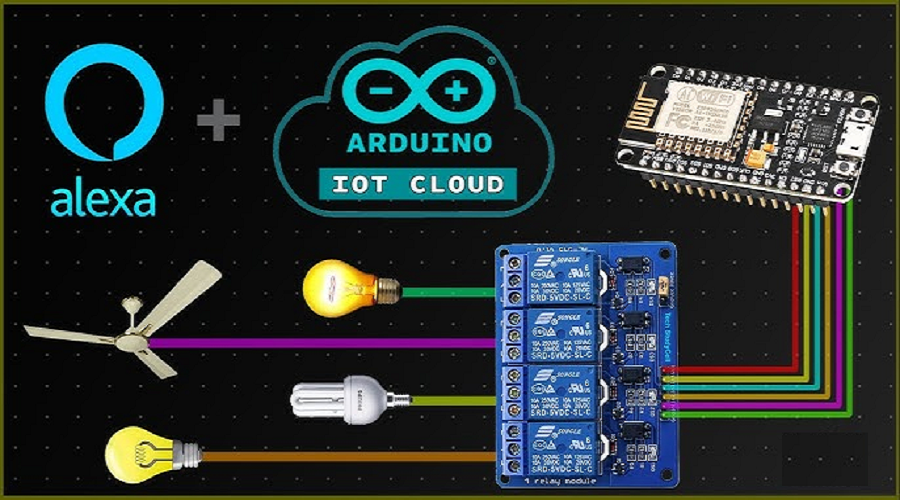 Automation Research & Embedded Technologies
Certificate Verification
Automation Research & Embedded Technologies
Certificate Verification
 Automation Research & Embedded Technologies
Certificate Verification
Automation Research & Embedded Technologies
Certificate Verification

"The Internet of Things (IoT) with ESP8266 NodeMCU course introduces participants to IoT fundamentals using the ESP8266 NodeMCU platform.
It covers sensor integration, data transmission, and cloud communication. Through hands-on projects, students will learn to build IoT systems, control devices remotely, and connect them to the internet for real-time monitoring and automation.."
Course Title:
Internet of Things (IoT) with ESP8266 node MCU
Course Duration:
15 Days (2 Weeks)
Total No. of seats:
10 seats
Prerequisites:
Basic understanding of electrical systems, automation, and control systems.
Course Fee: BDT 5000.00
Course Syllabus:
Day 1: Introduction to IoT and ESP8266 Theory: - What is IoT? Applications and Trends - Introduction to ESP8266 NodeMCU and its features Practical: - Setting up the development environment (Arduino IDE, PlatformIO) - Installing necessary libraries for ESP8266 Day 2: ESP8266 Pinout and Basic Setup Theory: - Understanding the NodeMCU pinout and features - Basics of GPIO control (Digital Inputs/Outputs) Practical: - Blinking an LED with ESP8266 - Controlling LEDs with push buttons Day 3: Introduction to Networking and Wi-Fi Connectivity Theory: - How ESP8266 connects to Wi-Fi - Overview of TCP/IP, HTTP protocols Practical: - Connecting ESP8266 to Wi-Fi - Testing connectivity with Wi-Fi status indicator Day 4: Web Servers on ESP8266 Theory: - Basics of Web Servers in IoT applications - Hosting a web server on ESP8266 Practical: - Create a simple web server on ESP8266 to control LEDs Day 5: Handling Web Requests Theory: - HTTP GET and POST methods - How IoT devices communicate with web apps Practical: - Send and receive data from a web interface to ESP8266 Day 6: Interfacing Sensors with ESP8266 Theory: - Types of sensors for IoT: DHT11, DHT22, MQ135, etc. - Reading analog and digital sensor data Practical: - Reading temperature and humidity using the DHT11 sensor Day 7: Sending Sensor Data to a Web Dashboard Theory: - Introduction to cloud platforms (Thingspeak, Blynk, Firebase) - Uploading sensor data to the cloud Practical: - Sending DHT11 sensor data to Thingspeak for visualization Day 8: Data Logging and Monitoring Theory: - Importance of data logging in IoT - Storing and analyzing IoT data Practical: - Create a simple data logging system with Thingspeak Day 9: Controlling ESP8266 from the Cloud Theory: - Cloud-based IoT control systems - How to send commands from the cloud to ESP8266 Practical: - Controlling LEDs from a mobile app (e.g., Blynk or Firebase) Day 10: Introduction to MQTT Protocol Theory: - What is MQTT? Why is it used in IoT? - Basics of topics, messages, publishers, and subscribers Practical: - Setting up an MQTT broker and communicating with ESP8266 Day 11: IoT Automation Using MQTT Theory: - Designing IoT automation systems with MQTT - Using Node-RED for IoT automation workflows Practical: - Automating sensor-based actions using MQTT and Node-RED Day 12: Security in IoT Theory: - IoT Security Challenges (Authentication, Encryption, etc.) - Securing ESP8266 Wi-Fi connections Practical: - Implementing basic security in ESP8266 (e.g., HTTPS, Secured MQTT) Day 13: Power Management in IoT Theory: - Power optimization techniques for IoT devices - Deep sleep mode in ESP8266 Practical: - Implementing deep sleep and wake-up methods in ESP8266 Day 14: Building a Complete IoT Project Theory: - End-to-end design of an IoT system (sensors, cloud, control) - Deploying IoT solutions for real-world applications Practical: - Final project setup: Monitoring and controlling devices through the cloud (e.g., smart home system) Day 15: Project Showcase and Troubleshooting Theory: - Common troubleshooting tips for IoT projects - Discussion on advanced topics and future trends in IoT Practical: - Presenting final project and troubleshooting any issues * Certification of course completion.Get the certificate